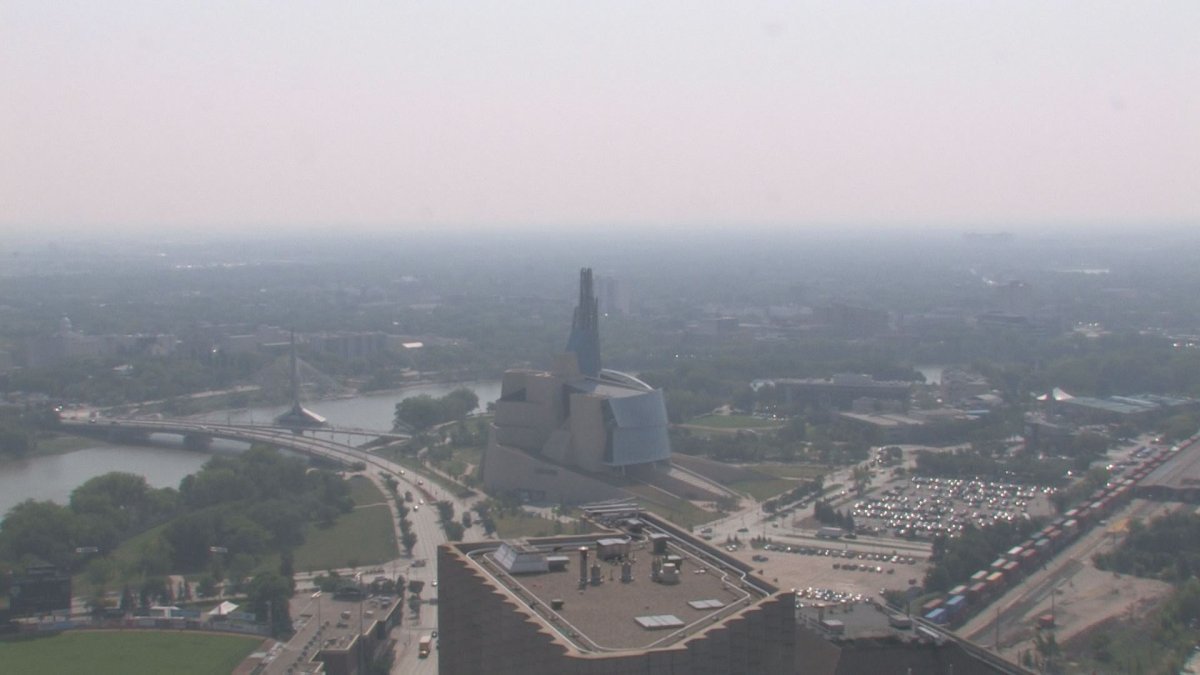The smoke in the air over Manitoba is drifting in from wildfires in western provinces and has prompted special air quality statements across the prairies.

Environment Canada issued an air quality statement for most of southern Manitoba Wednesday just before noon.
The smoke is expected to gradually improve throughout the day.
“The Environment and Climate Change Canada wildfire map shows hazy conditions in west and southern Manitoba today due to wildfire smoke carried over from British Columbia by strong northwesterly winds gusting to 40 kph today,” said Global News Weather Specialist Adriana Zhang.
“This could continue for several days as the wind becomes south/southeast tomorrow, smoke from British Columbia could combine with wildfire smoke from California.”
People may experience symptoms such as increased coughing, throat irritation, headaches or shortness of breath. Children, seniors and those with cardiovascular or lung disease are especially at risk.
People with lung diseases, such as asthma and COPD, can be particularly sensitive to air pollution. They will generally experience more serious health effects at lower levels.
Pollution can aggravate their diseases, leading to increased medication use, doctor and emergency room visits, and hospital visits.
“Due to the smoky conditions, individuals living in or travelling to the above noted areas are advised to be aware of potential health concerns that can be associated with current air conditions. In these current conditions, even healthy individuals may experience sore eyes, tears, coughing and a runny nose,” reads the statement.
How to cope
In areas affected by smoke from wildland fires, Manitobans are encouraged to:
- limit outdoor activity and/or strenuous physical activity; if breathing becomes difficult or uncomfortable, stop or reduce the activity
- reduce exposure to smoke by staying indoors or moving to areas with cleaner air, as conditions can vary dramatically by area
- turn off furnaces and air-conditioning units that may draw smoke indoors
- keep indoor air cleaner by avoiding smoking or burning other materials
People at higher risk include young children, the elderly, pregnant women and people with heart or lung conditions (particularly asthma), and should avoid as much exposure to smoke as possible.
-With files from Thomas Pillar
- ‘Shock and disbelief’ after Manitoba school trustee’s Indigenous comments
- Canadian man dies during Texas Ironman event. His widow wants answers as to why
- Several baby products have been recalled by Health Canada. Here’s the list
- ‘Sciatica was gone’: hospital performs robot-assisted spinal surgery in Canadian first








Comments